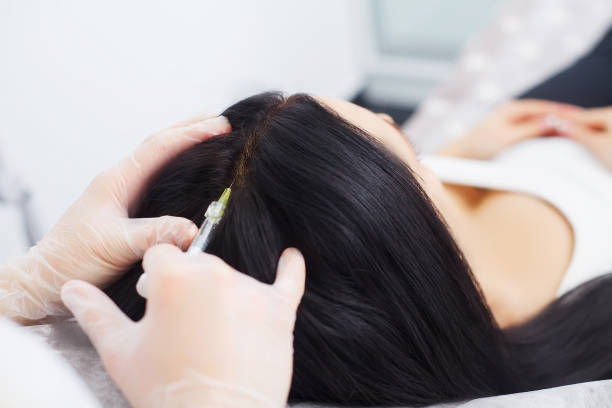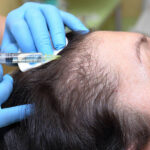Hair damage can be a frustrating issue, impacting not only appearance but also self-confidence. Various factors like environmental stress, genetics, and aging contribute to hair thinning and damage over time. Among the innovative solutions available, PRP hair therapy has emerged as a promising natural treatment that harnesses the body’s healing capabilities.
What Is PRP Hair Treatment?
PRP, or Platelet-Rich Plasma, is a treatment that uses a concentration of platelets derived from the patient’s own blood. Platelets are rich in growth factors that accelerate tissue repair and regeneration. In the context of hair restoration, PRP therapy injects this platelet-rich plasma directly into the scalp, targeting hair follicles in need of revitalization. The PRP Hair Treatment in Riyadh focuses on stimulating dormant or damaged hair follicles to enhance natural regrowth and strengthen existing hair. This natural, minimally invasive approach has gained popularity worldwide due to its ability to promote healing without involving synthetic chemicals or surgery.
Understanding Hair Damage and Its Causes
Hair damage occurs when the natural structure of the hair shaft or follicles is compromised. Common causes include excessive heat styling, chemical treatments, nutritional deficiencies, and scalp conditions. Over time, these factors lead to weakened hair strands and hinder the natural growth cycle. Damaged hair may become brittle, lose shine, and fall out prematurely, which motivates many to seek effective treatments that go beyond surface-level fixes.
How PRP Targets Damaged Hair Follicles
The mechanism behind PRP treatment is linked to the growth factors released by activated platelets. When injected into the scalp, these growth factors trigger several biological processes:
- Cellular regeneration: PRP encourages the proliferation of dermal papilla cells which are essential for hair follicle development and cycling.
- Increased blood supply: PRP improves microcirculation in the scalp, ensuring follicles receive adequate oxygen and nutrients.
- Anti-inflammatory effects: It reduces inflammation in the scalp that can contribute to follicle miniaturization and hair loss.
- Collagen production stimulation: Collagen helps repair the hair follicle structure and enhances scalp health.
This multifaceted impact helps repair damaged hair follicles, making PRP a powerful treatment option for those struggling with thinning, brittle, or damaged hair.
The Process of PRP Hair Treatment
PRP hair therapy typically involves drawing a small amount of blood from the patient, which is then processed in a centrifuge to separate platelet-rich plasma from other components. This concentrated plasma is carefully injected into targeted areas of the scalp. The procedure is usually outpatient and can be completed within an hour. Post-treatment, patients may notice subtle improvements in hair texture and thickness as the follicles react to the growth factors. Full results often develop over several months, reflecting the natural hair growth cycle.
Benefits of PRP Hair Treatment for Damaged Hair
The advantages of choosing PRP as a solution for damaged hair are numerous:
- It utilizes the patient’s own biological material, minimizing allergic reactions or rejection.
- PRP supports natural hair regrowth rather than masking hair loss symptoms.
- Treatment is minimally invasive with little downtime.
- It improves the overall health and quality of hair by repairing the underlying follicle damage.
- The therapy can be combined with other hair care routines for enhanced results.
The PRP Hair Treatment in Riyadh has helped many individuals successfully restore hair vitality, making it a trusted approach in hair care.
Factors Influencing the Effectiveness of PRP Treatment
Several factors affect how well PRP therapy works on damaged hair:
- Extent of follicle damage: The more severe the follicle impairment, the longer or more sessions may be required.
- Patient’s overall health: Nutrition, lifestyle, and underlying medical conditions impact healing and hair regrowth.
- Consistency of treatment: Regular follow-up sessions optimize effectiveness and maintain results.
- Quality of PRP preparation: The concentration of platelets and growth factors influences outcomes.
Understanding these factors helps users set realistic expectations and ensures they commit to a suitable treatment plan for lasting benefits.
Aftercare and Maintenance Tips
After receiving PRP injections, scalp care is crucial to maximize treatment success. Patients should avoid harsh hair treatments, reduce heat styling, and maintain a balanced diet rich in vitamins essential for hair health. Scalp massages and gentle cleansing support improved circulation and follicle nourishment. Consulting with hair specialists about complementary therapies or supplements can further support hair regrowth efforts.
The PRP Hair Treatment in Riyadh emphasizes the importance of holistic care combined with medical intervention to achieve the best possible outcomes.
Conclusion
PRP hair treatment presents an exciting and scientifically supported option for those looking to restore damaged hair naturally. By leveraging the body’s own healing power and targeting the root causes of follicle impairment, this therapy promotes healthier, stronger hair growth. With its minimal invasiveness, safety, and promising results, PRP is becoming a preferred choice for many seeking to rejuvenate their hair.
Frequently Asked Questions
What makes PRP treatment effective for damaged hair?
PRP contains concentrated growth factors that stimulate cell regeneration, improve blood flow, reduce inflammation, and promote collagen production—all essential for repairing damaged hair follicles.
How soon can results be expected from PRP hair treatment?
Typically, initial improvements in hair texture and thickness appear within a few weeks, with more noticeable regrowth visible after several months following the natural hair growth cycle.
Is PRP hair treatment suitable for all hair types?
Yes, PRP can benefit various hair types and thicknesses, as it focuses on strengthening follicles and promoting regeneration regardless of hair texture.
Are there any side effects of PRP hair treatment?
Side effects are minimal since PRP uses the patient’s own blood. Some may experience mild scalp tenderness, redness, or swelling shortly after treatment.
Can PRP treatment be combined with other hair restoration methods?
Yes, PRP often enhances results when combined with other treatments such as topical therapies or microneedling, based on professional advice.
How many PRP sessions are typically needed for optimal results?
The number of sessions varies, but many patients benefit from an initial series of 3 to 4 treatments spaced weeks apart, followed by maintenance sessions as recommended by the specialist.








0 Comments